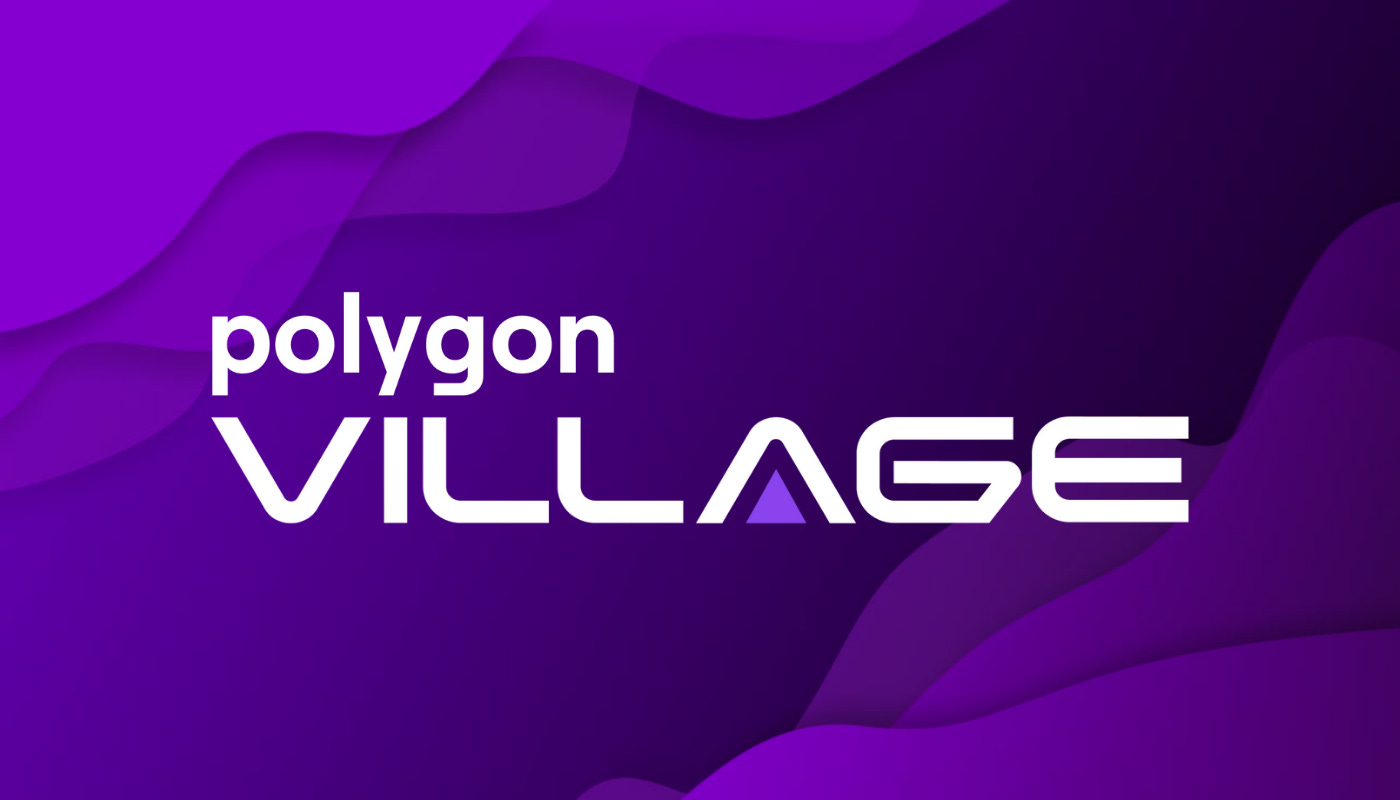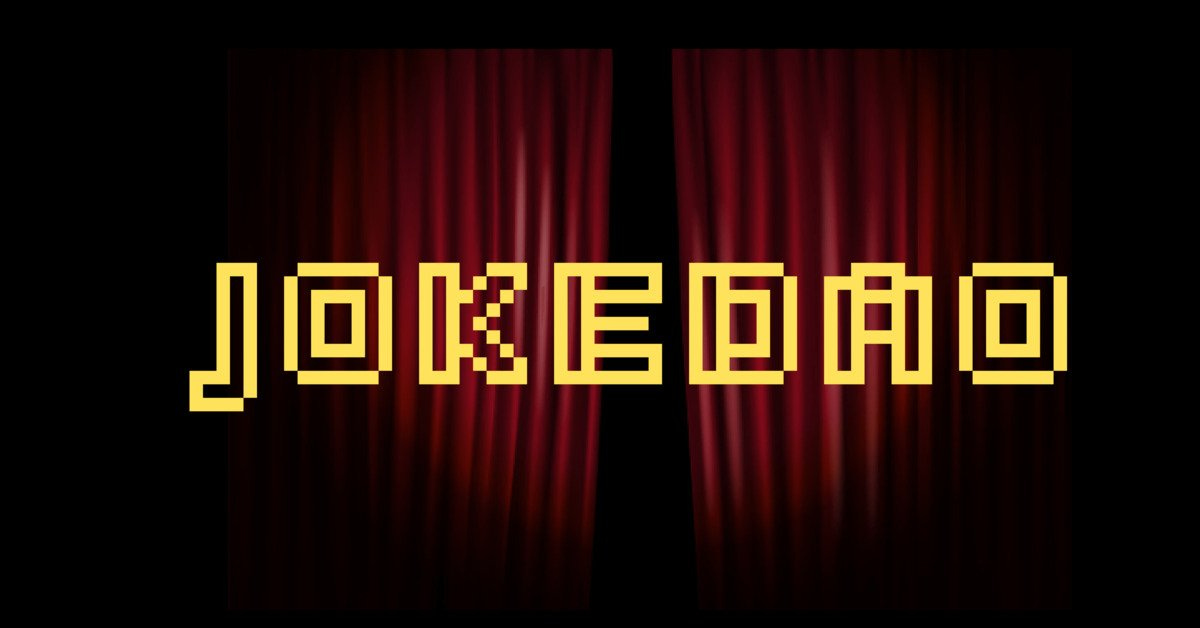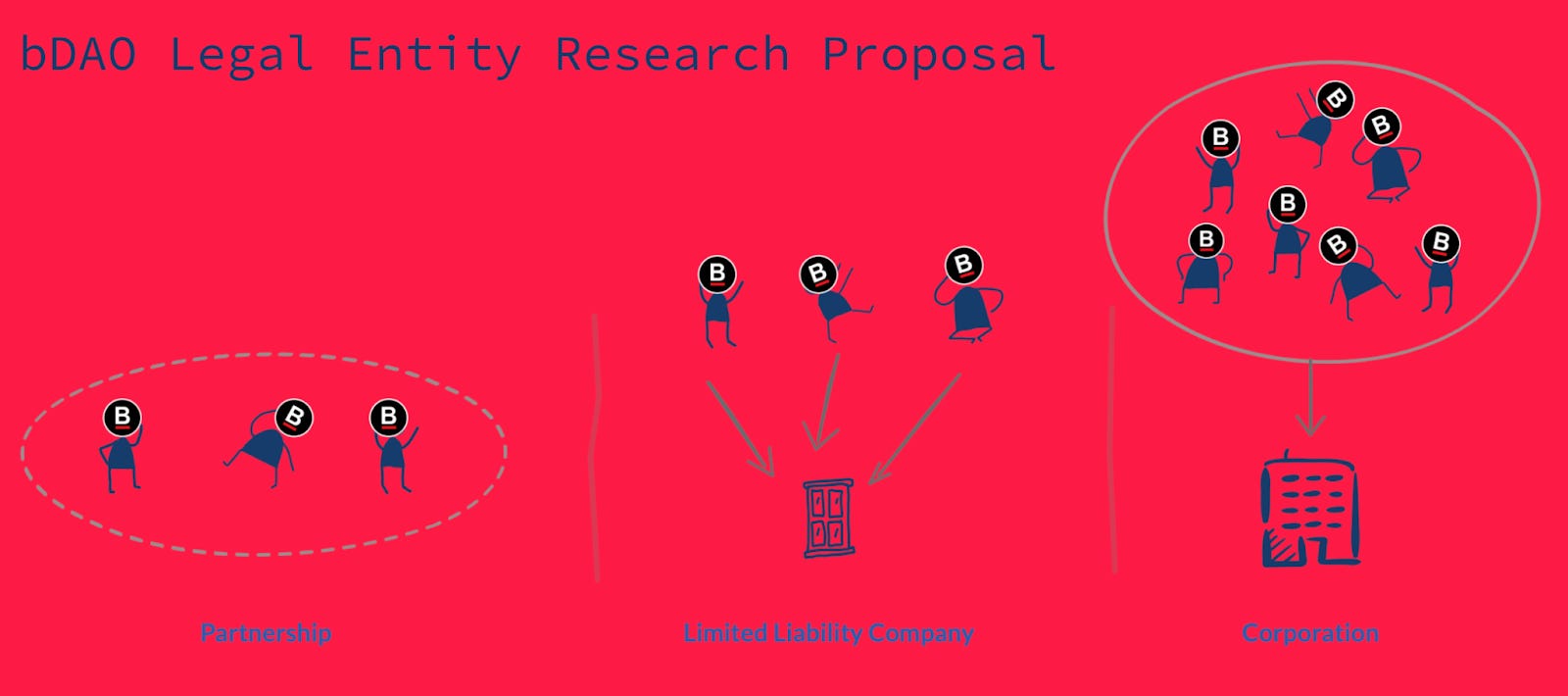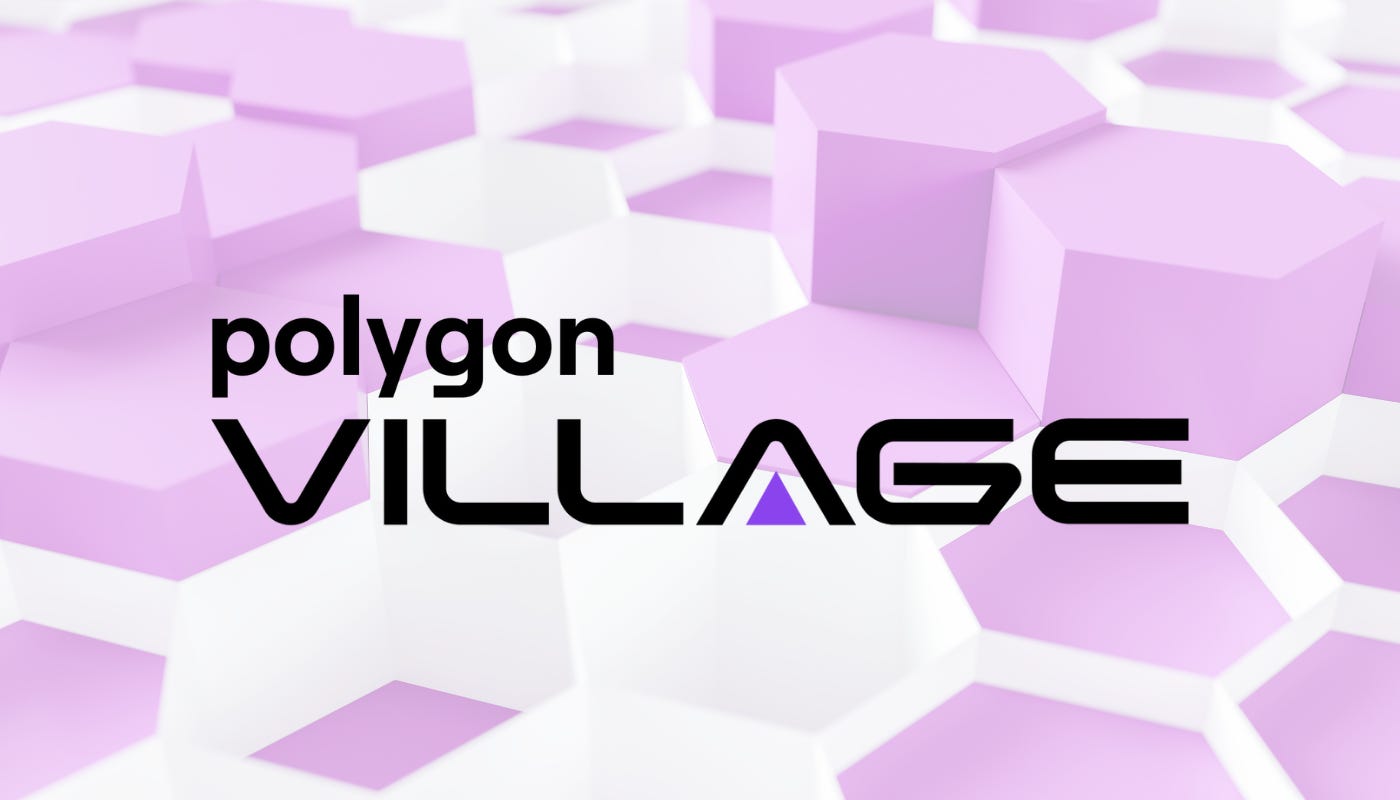Bankless DAO - The Merge | Decentralized Law
Dear Crypto-Legal Observers, Two weeks ago, we witnessed one of the most anticipated events in crypto history – The Merge. Six years in the making, The Merge transitioned the Ethereum network from validating blocks via a proof-of-work consensus mechanism to proof-of-stake, reducing the amount of energy required to secure the network by 99.95% and providing the necessary infrastructure to scale Ethereum at a network level. Bravo! But what about the legal ramifications? Debate on the legal ramifications of The Merge is where crypto-legal practitioners diverge. One of the most contested legal issues to arise is whether it’s now more likely that ETH will be classified as a security under U.S. law:   Adam Levitin @AdamLevitin Something no one is talking about: after the Merge, there's will be a strong case that Ether will be a security. The token in any proof of stake system is likely to be a security.That latter Adam even built a website “dedicated to review the technical and legal status of securities law related to Ethereum”. While many argue the nuances of whether The Merge has made the ether token more or less likely to be a security, there is a third option. Perhaps The Merge doesn’t really affect the outcome of the analysis at all. This latter view is subscribed to by Marc Boiron, the Chief Legal Officer at Polygon. According to Marc, “Ethereum’s transition to proof-of-stake doesn’t change the likelihood of ether being classified as a security”. In this month’s issue of Decentralized Law, Marc gave us a fantastic interview that touches on that very briefly, but also provides a level of depth and clarity around decentralization that is both nuanced and revelatory. Marc discusses the importance of ‘sufficient decentralization’, which is “a way of interpreting the last prong of the Howey test – the expectation of profits based on the entrepreneurial or managerial efforts of others — that the U.S. Supreme court created to determine whether an investment contract exists. Where something is sufficiently decentralized, nobody expects a profit from the efforts of any identifiable people….When the source of one’s expectations of profits and the information that leads to those profits are so dispersed, securities laws should no longer apply and, thus, it naturally makes sense that the last prong of the Howey test fails”. If you’d like to further understand the concept of sufficient decentralization, Marc literally wrote the playbook:   Also in this issue, we analyze the legal implications of Ethereum’s censorship resistance, review considerations when staking on a centralized exchange, explore whether post-Merge ETH is more likely to be classified as a security, dig into airdrops and taxation Down Under, summarize news and articles from throughout the cryptoverse, and check in on some crypto-legal tools. Although this newsletter may help to familiarize readers with the legal implications arising out of blockchain technology, the contents of Decentralized Law are not legal advice. This newsletter is intended only as general information. Writers’ opinions are their own; therefore, nothing in this newsletter constitutes or should be considered legal advice. Contact a legal expert in your jurisdiction for legal advice. Welcome to Decentralized Law. Contributors: eaglelex, lion917, COYSrUS, Trewkat, Cheetah, pub-gmn.eth, teresacd, Latsan, merlo.eth, Oluwasijibomi, Lanksss, ximpli_ana, Jay the Legal Wizard, Aloy, lawpanda, hirokennelly.eth This is an official legal newsletter of BanklessDAO. To unsubscribe, edit your settings. 🙏 Thank You to Our PartnerPolygon Village - A full-stack ecosystem for developers to build and grow 🎙 InterviewMarc Boiron Is at the Center of Decentralization Thought Leadership
I started my practice in corporate law working on mergers and acquisitions before transitioning to working with early stage companies. As I was working with those companies, I started looking for ways to work with companies in an industry I was passionate about. By late 2016, I had been digging into Bitcoin and Ethereum for a year or so and decided I wanted to spend more time involved with the technology. In early 2017, I started taking a look at crypto-legal issues, but it was quiet until the second quarter of 2017. At that time, I started using the securities law experience I had from working with early stage companies to start advising on financing and token distributions.
The ability to change the way we do so many things. Web3 can solve the complexity of web2 organizations as a result of the centralized infrastructure they oversee. A simple task like escrowing funds results in a huge web2 project, but it’s just a simple smart contract in web3. Once you explore much more complex web2 interactions, you realize that just a few lines of code can replace them. Then, after you start working with web3 developers, you start realizing that their ingenuity can transform the way we engage in many day-to-day activities using blockchain technology. This also opens the door for very creative and exciting solutions to crypto-legal issues. These interactions with developers and exciting solutions available in crypto law just compound my passion for blockchain technology.
Sufficient decentralization is a way of interpreting the last prong of the Howey test – the expectation of profits based on the entrepreneurial or managerial efforts of others — that the U.S. Supreme court created to determine whether an investment contract exists. Where something is sufficiently decentralized, nobody expects a profit from the efforts of any identifiable people. Instead, they expect a profit from a breadth of participants in an ecosystem, such as software developers, users, marketers, business developers, lawyers, investors, and validators. When the source of one’s expectations of profits and the information that leads to those profits are so dispersed, securities laws should no longer apply and, thus, it naturally makes sense that the last prong of the Howey test fails.
The traditional thought process behind the importance of decentralization from a legal perspective is the desire to fail the last prong of the Howey test as described above. However, there are other reasons. One of them, from a policy perspective, is eliminating the need for certain laws through decentralization. Decentralization is effectively spreading control from one to many. Once that control is spread among enough people, concerns over the types of things that one person with control can do no longer exist, because the likelihood that many people coordinate to act as one person becomes close enough to zero to treat it as non-existent. At that time, as a policy matter, it is better to eliminate the law that would apply to the one person acting in the situation when a decentralized group is acting.
Uncoordinated efforts are the key aspect of decentralization. The more a lack of coordination exists, the greater the decentralization. Uncoordinated efforts refer to people acting in an independent manner where they do not work to solve a problem with others who also are working on the same problem. The more people working independently to solve problems, the more decentralized the efforts are to solve the problems. Thus, when working on decentralization, whether on chain as a technical matter or off chain, the goal should always be to optimize for a great enough number of people acting in an uncoordinated fashion.
Decentralizing, for legal purposes, core blockchain infrastructure is actually the easiest. That infrastructure has the greatest potential to be used by the most people. For example, a general-purpose chain like Ethereum has thousands of potential applications that can be built on it. Each of those applications help to further decentralize the Ethereum ecosystem. In addition, each of those applications likely will bring several more people to the Ethereum ecosystem who can further help decentralize it. That decentralization could come in the form of on-chain efforts, such as running a node, or off-chain efforts, such as writing code or marketing. All of those activities occur at a much greater scale on blockchain infrastructure than on applications built on that infrastructure.
Scaling solutions tend to be more centralized as a technical matter than L1s, which leads to greater legal challenges across multiple regulatory regimes. However, that centralization is not inherent in scaling solutions. Scaling solutions are in their infancy, especially relative to L1s. With time, those scaling solutions will become more decentralized and eliminate differences in legal challenges relative to L1s.
The CLO role is different at Polygon companies and dYdX Trading because Polygon companies develop general purpose blockchain scaling infrastructure while dYdX Trading develops applications on blockchain infrastructure or application specific blockchain infrastructure. Polygon has a broader suite of protocols it is developing, which requires greater capacity for considering potential legal challenges across a range of protocols, but each individual protocol is relatively low risk or can be developed in a low-risk manner due to their general purpose nature. Ultimately, the difficulty of navigating legal issues comes down to a team’s willingness to be thoughtful about them. I’m fortunate that at dYdX Trading, I was able to work with one of the most thoughtful founders in the space on legal issues, who was wisely able to calculate appropriate risks driving the protocol forward. Similarly, at Polygon companies, I’m fortunate to work with founders who give serious consideration to legal issues and follow advice they are given while weighing tradeoffs. In both of those instances, legal challenges are relatively easy to navigate due to the internal support and good communications.
Ethereum’s transition to proof of stake doesn’t change the likelihood of ether being classified as a security. At most, the efforts leading up to the transition and coordination around the transition itself could be evidence that ether was a security due to the reliance of ether holders on the Ethereum Foundation’s efforts to create a profit in ether. The Ethereum Foundation continues to engage in efforts after the transition so risk has not changed in that respect. Regardless, the Ethereum Foundation’s efforts are minimal compared to the billions of dollars of value driven through the protocol by applications like Uniswap and Aave and scaling solutions like the Polygon network that result in users using Ethereum instead of another blockchain. Those efforts also are minimal compared to the massive marketing activities that Bankless engages in all the time or that Ethereum users engage in when seeking to bring more users to Ethereum. Ultimately, the Ethereum Foundation is now just a small part of a much bigger ecosystem that drives significantly more value into ether than the Foundation.
Humans want to operate in the most efficient way possible, which will always be in a centralized way. We need to continuously force decentralization, even when centralization results in faster growth or feels more comfortable. This means taking some risk because with centralization comes control; decentralization results in a loss of control. Pushing teams to give up that control is always the trickiest part. This is true for both on-chain and off-chain activities. For example, creating one entity that all contributors provide services to and acts on behalf of a DAO is efficient but centralized. Many DAOs are tempted to move in this direction, whether it be by formally creating an entity or acting together as if one entity hired all contributors. When these types of proposals arise in DAOs, contributors must recognize those risks and push for other efficient, though less efficient, structures, such as multiple, less-coordinated subDAOs.
It is important to recognize that building systems that are efficient for business operations are never going to be as decentralized as those that have significant inefficiencies. But there must always be some inefficiencies for sufficient decentralization to exist. Without those inefficiencies, centralization will certainly exist. There is a balance that can be found, though, where some inefficiencies still exist, but most are eliminated. I wrote a playbook on this topic that was posted on Variant Funds’s blog. The general idea is that sufficient decentralization turns on both on-chain and off-chain activities. This means that the network or protocol needs to be decentralized, but so do activities related to software development, business development, marketing and growth, intellectual property, and governance. The key is to distribute these activities among enough separate groups of coordinated people within those groups but for all these activities to be happening in the aggregate in an uncoordinated manner among those groups. For this to succeed, communication is important. It requires that open tooling be used and frequent public updates exist. Groups should form around operational needs to support the broader off-chain activities that occur so that they can assist with increasing efficiency without creating too much centralization.
A well-known management principle is that ‘what gets rewarded gets done.’ This is not different in decentralized systems and communities. Why is Ethereum decentralized? Because people get rewarded for validating transactions. Why will people contribute to a protocol? Because they get rewarded. Those rewards can come in multiple forms. Often, they will be economic rewards — whether on-chain block rewards or off-chain grants or bounties — or non-economic rewards — whether public recognition, greater freedom or other benefits contributors find personally satisfying. It is important for ecosystem participants to build a culture of rewarding contributions in this manner; otherwise, contributions will either dry up or never start.
Open-source code is not a form of decentralization but it is a precondition to decentralization. If code is not open source, then permission to run the code is necessary, which inherently prevents decentralization.
SubDAOs are small groups of people working together at the direction of, or with compensation from, the DAO. A subDAO can be people working together informally on one off-chain activity, people working together formally on one off-chain activity, or people working together formally on one off-chain activity within an entity that takes direction from or is funded by the subDAO. Each of those types of subDAOs have trade-offs around decentralization, efficiency, and risk, and the way contributors want to operate within subDAOs will depend on their situations. Although no contributions should ever be required to be made through subDAOs, subDAOs can support decentralization efforts by creating clarity and certainty as to how contributions can be made within the DAO. It allows people to feel potentially more certain about compensation or limited liability. It can lower risk by limiting a person’s liability by signing contracts on behalf of an entity instead of personally or providing a clear path on addressing tax obligations. To the extent contributors are more likely to contribute to the DAO through subDAOs than personally, the use of subDAOs can increase decentralization.
The most surprising part of my work likely is the amount of time I spend with developers to find solutions to legal problems. There are a significant number of regulatory regimes where using technology to replace human actions eliminates legal obligations or reduces legal risk. Working with developers to determine how software that is being developed can be developed in a different way to address legal risks is where I think lawyers can add some of the most value in crypto. Marc Boiron is Chief Legal Officer of the Polygon companies, developers of decentralized Ethereum scaling solutions, after having been Chief Legal Officer at dYdX Trading Inc., a non-custodial cryptocurrency derivatives exchange. Marc is also an advisor at Variant Fund and on the board of directors of the DeFi Education Fund. ⚖ DevelopmentsThe Legal Implications of Maintaining Ethereum’s Censorship ResistanceAuthor: Teresa Carballo
Value of Censorship Resistance for EthereumCensorship resistance is at the core of the values Ethereum has been promoting since its initial development. With The Merge, there are now ways to prevent and recover from strong censorship at the base layer. Once other additions, currently in the research phase, such as Proposer/Builder separation are implemented, Ethereum will be even stronger in preventing any sort of censorship. Many questions have come up on this subject, especially since the U.S. Treasury Office of Foreign Assets Control (OFAC) imposed sanctions against Tornado Cash. So it’s worth considering under what circumstances Ethereum could be censored and to what extent nation states could negatively impact the protocol. Weak vs. Strong CensorshipWeak censorship refers to a transaction being delayed because it wasn't accepted by the validator in charge of it. This sort of censorship does not refer to an actual attack within the protocol and can be easily solved by automatically sending the transaction to a new validator. For example, if Lido, a staking protocol which holds approximately 30% of the staked ETH, was coerced by any jurisdiction to refuse validation for certain transactions, these would probably be delayed in their execution but not completely stopped. Another validator would validate those transactions. Not all of the Lido validators are in the same geographic location. In addition, Lido is governed as a DAO, which can be thought of as a network state that can make its own decisions on how to react to sanctions. Strong censorship, in contrast, means a transaction is never included on chain. This could happen, for example, if 51% or more of the network nodes take control of the network and are refusing to permit the transactions to be validated. There are different mechanisms to prevent and recover from a 51% attack. One of the preventive measures against a strong censorship attack is to ensure jurisdictional diversity among the validators, such that not more than 51% of the validators are in the same legal jurisdiction. With the transition to PoS, becoming a validator has become easier and cheaper than being a miner in PoW. At the moment, nearly 45% of Ethereum validators are in the United States, with Germany in second with 12%. Strong censorship could occur if one nation state represents more than 51% of the validators or if one party buys more than half of the network stake. As for recovery from strong censorship, the measure established by Ethereum is forking away from the censored chain, basically censoring the censor. In such a case, the community would need to accept the new chain and continue building on top of it. The Parties Involved in ETH Proof-of-StakeAt a protocol level, validators are the core component of Ethereum PoS. To participate as a validator, interested parties must deposit 32 ETH into the deposit contract. The validators could be solo home stakers (these may be the ideal validators), a provider of staking as a service, a pooled staking arrangement, or a centralized exchange. These options entail different rewards, risks, and requirements. The way PoS works is that one validator is randomly selected to be a block proposer in every slot. This validator is responsible for creating a new block and sending it out to other nodes on the network. For every slot, a committee of validators is randomly chosen, and their votes are used to determine the validity of the block being proposed. Liability for Non-Compliance With Government DirectivesWhen OFAC required parties to block interactions with Tornado Cash addresses, many complied with these requirements to prevent being liable for any violations. A great deal has been said about the topic and this is still a gray area. Investigators in the matter say that base-layer participants are not required to monitor or censor the addresses, that the blockchain technology infrastructures aren't required to comply based on the current legislation — this is referring to the U.S.— because they are not financial institutions, and independent participants are publicly recording the order of data blocks at the infrastructure layer. In addition, requiring compliance would threaten the viability of the ecosystem and harm national security interests by pushing the technology development offshore. This sanctioning of not just countries, individuals, and entities, but also computer code is without precedent and raises many unanswered questions from a legal perspective. But the question also remains as to whether participants in the Ethereum network are ultimately responsible for the transactions validated within its blocks. When we talk about other parties involved in the Ethereum community, not in the base layer, it may be easier to determine responsibilities. Centralized cryptocurrency businesses are likely to comply with regulations from the country they are based in, and could be prohibited from interacting with certain parties or from executing certain transactions. In other cases, once a smart contract is implemented on Ethereum, the person who deployed it has no control over it. Ethereum Is Not LiableCould the Ethereum network be held responsible if it processes transactions from sanctioned addresses? The problem is that no individual controls the network. Because of the decentralized development and use, and its open-source nature, Ethereum is an extra-national entity that provides base layer neutrality. Ethereum is no one's property, so how can it be sanctioned? Actions From the Community‘Activist Unstaking’ is a solution the Ethereum community has been proposing in the event of regulatory issues arising from the Tornado Cash sanctions. This would mean that validators would unstake before allowing censoring in order to protect the chain. For example, Coinbase’s CEO has indicated he may exit the staking business if he were forced to censor transactions. In fact, Coinbase is helping sue OFAC over the Tornado Cash sanctions by paying for six individuals to file a lawsuit (including two Coinbase employees). Clearly, the crypto legal community has its work cut out for it. Advocacy will be key in convincing nation states and regulators to accept Ethereum as it is. Teresa has a background in litigation but now focuses on corporate preventive law. She is fascinated by lawyering in web3 and is licensed to practice law in Panama and Mexico. Considerations When Staking on a CEXAuthor: Latsan
Many of us are familiar with the concept of staking ETH on a centralized exchange, but few of us have ever considered what’s in it for both parties. And even if you don’t stake ETH but hold it on a CEX, the exchange may be able to stake that ETH and keep the yield. Suffice to say, now is a good time to review some things to consider when staking on a centralized exchange. Staking ETH on an ExchangeThe most common way that exchanges offer staking is through the staking contract. Customers can opt to send ETH to the smart contract, and the yield will be paid out to the customer in ETH. This is a great way for exchanges to show their commitment to the Ethereum network, and it's also a convenient way for customers to earn a passive return on their ETH. However, there are a few things that customers should consider before they stake their ETH:
Benefits to Staking ETH on a ExchangeStaking ETH can help to improve the liquidity of the exchange. This is because when a customer stakes ETH, the customer is essentially providing the exchange with additional capital. This can help to increase the number of trades that the exchange can process, which in turn can help to improve the liquidity of the exchange. Risks to Staking ETH on an ExchangeSome of the potential risks for an exchange associated with permitting its customers to stake their ETH through the exchange include:
Anything Else?ETH staking can benefit customers by providing them with predictable yield while helping to secure the network. Staking also benefits exchanges because it increases their liquidity, gives them revenue, and sometimes enables them to spin up their own liquid derivative. And for an exchange that allows users to hold ETH but not stake, it’s possible this exchange will be staking this ETH and keeping the yield, which may be permissible under certain circumstances. It seems that we always must go back to modify the crypto mantra - not your keys, not your yield. Latsan is a seasoned public blockchain & metaverse speaker. He is a data analyst with expertise in web2 analysis and web3 on-chain analysis. He is also a content creator in the blockchain space. Will The Merge Make ETH More Like a Security Than a Commodity?Author: Oluwasijibomi
The Merge has reduced the Ethereum network’s energy consumption to less than a percent of its former usage and the network is ready to scale, but the switch to a staking-based consensus mechanism could also lead to the classification of its token, ether, as a security under U.S. law. If the U.S. Securities and Exchange Commission (SEC) were to conclude that ether is a security, the centralized exchanges that list the ether token and have U.S.-based customers would be subject to more onerous regulations. To date, ether has generally been regarded as falling outside the scope of the SEC's jurisdiction, much like bitcoin (BTC). The Howey test determines whether an asset is to be classified as a security. Any asset that meets the elements of the Howey test will be regarded as a security by the SEC. For a history and detailed analysis of the Howey test, see The SEC’s Insecurities in the August 2022 issue of Decentralized Law. The Howey test has four prongs (sometimes presented as three, with the final two combined): 1. a monetary or financial commitment An asset is regarded as an investment contract, and subsequently a security, if it satisfies these four elements. Even if an asset doesn't precisely fit the bill, economic realities — the entirety of the circumstances surrounding a commercial transaction — might nonetheless allow for its classification as a security. ETH StakingWith proof-of-stake, stakers “who run nodes are also known as validators, because they propose and validate new blocks, which enables them to earn yield on their ETH. This yield primarily comes from block rewards and tips/bribes paid to validators to order transactions in a certain way”. The capital requirement at present is 32 ETH, or around 55,000 USD. For staking the ETH and investing hardware and software resources into the network, validators earn staking rewards of approximately 4% a year, according to the Ethereum Foundation, a nonprofit organization that directs software development for the network. For comparison, that is almost two times what a one-year CD from a U.S. bank would pay. Is Ether a Security or Commodity?An initial coin offering (ICO) worth $18 million was used to finance Ethereum. While ether might have been a security at its launch, it has grown sufficiently decentralized to no longer be considered as such. An Ethereum proof-of-stake system necessitates financial commitment (staking) in a shared project (Ethereum) with the expectation of rewards (staking rewards) solely from the effort of others. Using a cryptographic mechanism, proof-of-stake enables stakers to invest in validation pools when others handle the actual hashing. This relates to how the third and fourth prongs of Howey are to be interpreted, which is to expect rewards solely from the labor of others. Assets can move along a security/commodity continuum, so if ether was initially a security, variables like the degree of decentralization and the consensus mechanism may plant it outside of the SEC’s jurisdiction. If ether is designated a security according to U.S. law, the impact on centralized exchanges will be significant. To support spot ETH trading, exchanges currently only need to register as money services businesses at the federal level and receive money transmitter licenses in the states where they conduct business. If the situation changes, the SEC and The Financial Industry Regulatory Authority would have oversight, and there will be a raft of extra rules. The downstream consequences of this radical change are difficult to predict. It could possibly result in new revenue models for exchanges (if they also wanted to deal in securities) but would definitely result in additional complexity. Oluwasijibomi is a resourceful Product Manager who focuses on the web3 space, offering a career history of success, driving organizational growth and new product development within the blockchain and cryptocurrency industry. 👮♂️ TaxationNew Guidance from the Australian Tax Office on AirdropsAuthor: merlo.eth
The Australian Taxation Office (ATO) has recently adapted the guidance on their website in relation to the income tax treatment of tokens received from airdrops. Previously, tokens received from airdrops have been considered ordinary income, earned at the time the token hits a taxpayer’s wallet. This has led to some taxpayers and their advisers formulating strategies to smooth out their income by deferring the timing of their claim for airdropped tokens until the next financial year. The ATO has introduced a new concept in their updated guidance, known as an 'Initial Allocation Airdrop'. To fit this definition, their brief guidance prescribes that the airdrop must be the very first distribution of a project’s tokens and that no trading of that token has taken place prior to the airdrop. If an airdrop fits that definition, the ATO now suggests that taxpayers do not derive ordinary income or make a capital gain at the time of receiving them. The new guidance brings consistency to their guidance for similar concepts, including tokens received from chain splits such as Bitcoin/Bitcoin Cash, Ethereum Classic/Ethereum and any potential Ethereum proof-of-work/proof-of-stake hard forks. These tokens are similarly not deemed to have a taxing point at the time of the hard fork, for similar reasons to an Initial Allocation Airdrop. While it means that tokens received from Initial Allocation Airdrops have a cost base of zero ($0), it potentially revises the previous strategy for deferring airdrop claims. For those who intend to hold their airdropped tokens long term, it makes more sense under this guidance to claim as soon as possible and start the clock for any potential CGT discounts. There may also be scope for taxpayers to amend previously lodged income tax returns in light of this updated guidance. It is worth noting that guidance provided by the ATO on their website, in addition to guidance provided by their representatives on their community forum, is not legally binding. Making any changes — both past, present and future — should be done only after consulting with your registered tax adviser. merlo.eth is an accountant and tax agent who is currently growing specialist cryptocurrency tax services in a public practice based in Brisbane, Australia. 🙏 Polygon Village - A full-stack ecosystem for developers to build and grow 🌐 News and Selected Articles
The Merge Is Ethereum’s Insurance Against Government ControlAuthor: Tomio Geron 🔑 Insights:
Evaluating Ethereum: 1 Week After The MergeAuthor: Sam Kessler 🔑 Insights:
Canada: The Ethereum Merge: A Canadian Tax Lawyer's GuideAuthor: David Rotfleisch 🔑 Insights:
Legal Implications of the Ethereum Merge and Potential Ethereum Proof-of-Work ForkAuthors: Jenny Cieplak, Adam Fovent, Ghaith Mahmood, Justin Tzeng, Yvette Valdez, and Stephen Wink 🔑 Insights:
The Merge: What Are the New Legal Issues Following Ethereum’s Huge Upgrade?Authors: Luke Dawson and Tim Edwards 🔑 Insights:
SEC Claims All of Ethereum Falls Under US JurisdictionAuthor: Sander Lutz 🔑 Insights:
🧰 Legal ToolsGovernance Experiments With Jokedao and BanklessDAOAuthor: eaglelex Jokedao is building community-led governance experiments for DAOs to build soft consensus. The new tooling allows a bottom-up, on-chain governance, where token holders submit and vote on proposals which are relevant for the community: for instance, roadmaps, grants, endorsements, bounties, curation, and contests.   The main value proposition is decentralization of the governance processes within DAOs. Often, proposals only arise from a small group of contributors, but this process aims to involve people from every part of the community. Through jokedao, the community is incentivized to raise its voice in a gamified environment. Jokedao ‘contests’ are held in two different periods:
As a proof-of-concept, jokedao has launched the jokerace, a weekly contest which engages the community with jokes and which is building its own treasury. Community members get one vote every week for each held JOKE token.The winning entry is minted as a NFT with 20% to the joker, 20% to charity, and 60% to jokedao. In its current form, jokedao is therefore both a game (the jokerace) and a game engine for communities. The BanklessDAO community will have the opportunity to test jokedao, thanks to a partnership proposed by BanklessDAO contributors. The sentiments of the BanklessDAO community concerning core governance areas will be assessed in an innovative and funny way. Every member of the community will get a chance to participate and to engage with competing proposals! What’s Up With the BanklessDAO Legal Guild Legal Entity Research Project?Author: lawpanda
In March 2022, Decentralized Law’s issue Legal Entity Solutions for DAOs addressed considerations related to decentralized autonomous organizations operating without a legal ‘wrapper’ or associated legal structure. Where previously, being fully on chain with nominal off-chain interaction was the default, DAOs and their contributors increasingly seem to be of the opinion that having a legal entity is beneficial — or necessary — to the DAO and its members. A legal entity provides a DAO with default statutory provisions, the ability to operate more easily in the off-chain world, and a jurisdiction in which it can pay taxes. A legal entity also protects DAO members from joint and several liability, which is common law in most U.S. jurisdictions where a DAO's default legal status is as a general partnership. That said, there are significant considerations as to why utilization of various agreements/documents to outline the parameters of participation in the DAO and avoiding association with off-chain entities may be preferable. As 2022 progressed, BanklessDAO’s Legal Guild revisited an ongoing background project considering various potential legal entity structures that might be beneficial to the DAO, future subDAOs, and even individual BanklessDAO projects. The Legal Guild charged lawpanda and Dr. Biyan Mienert (aka DAOLAW) with coordinating the project based on their incredibly uniquely named prior respective work comparing entity structures. See, e.g., How can a decentralized autonomous organization (DAO) be legally structured? and Legal Entity Wrapper Comparison & Assessment. The project also utilizes and takes into consideration work by Chris Brummer and Rodrigo Seira from Paradigm, Miles Jennings and David Kerr of a16z, along with a host of other projects and organizations. Entities like Poko and MIDAO have also volunteered time and information regarding their legislative efforts in the Marshall Islands and Kazakhstan. And members of Legal Guild have been assisting with research and documentation from their respective diverse practice jurisdictions. In late May 2022, the Legal Guild’s research proposal was approved by BanklessDAO’s Grants Committee and work began in earnest — though somewhat slowed by contributor summer vacations. Additionally, the scope of the project has increased during the course of research. The Legal Guild’s ultimate goal is to provide a functional public-good document that will provide BanklessDAO members — and the web3 community as a whole — an overview of potential legal entity structures that may or may not benefit their DAO or project, a discussion why association or wrapping with a legal entity may or may not be ideal, and some more technical considerations for the various jurisdictions and entities. Because the final product will not be legal advice that should be relied upon for making determinations, the Legal Guild is gathering contact information for legal practitioners or companies that provide registration services in the respective jurisdictions. However, each DAO or project has the obligation to do its own research regarding potential entities, jurisdictions, and confirm the qualifications of any company or practitioner they ultimately retain. As stated above, the ultimate product is meant to provide an overview of options to allow BanklessDAO and other DAOs narrow the potential options before contacting appropriate counsel in the jurisdiction. The final product is intended to educate readers regarding considerations and what questions they should be asking whatever counsel they retain to set up their structure. An overview and tentative timeline for the project can be viewed here. The Legal Guild is looking to partner with entities or contributors that are interested in providing information, documentation, and insight related to the topics for entities and jurisdictions listed on the chart below. The Legal Guild is also looking to identify qualified practitioners in DAO-friendly jurisdictions who can be retained to respond to inquiries and potentially effectuate registration of the chosen entity. If you are a legal practitioner — or legal adjacent like MIDAO’s Adam Miller — interested in getting involved for the clout of your name being listed as a contributor, for advertising as a legal practitioner or registrar company, or for whatever other reason, please feel free to email lawpanda.eth@gmail.com or ping him on Twitter or Discord. For the purposes of lawyerly caveat, qualification, and carve-out, the BanklessDAO Legal Guild does not represent BanklessDAO or any member of the DAO unless specifically retained pursuant to the retained practitioner’s jurisdictional rules.This means there is no attorney-client relationship established and legal privilege does not attach when communicating with the Legal Guild and its members, unless a member is specifically retained. Additionally, BanklessDAO is not associated with the BanklessHQ media entity beyond utilizing the ‘Bankless’ brand. The Global Tax GuideAuthor: Metaversal Revenue Service
BanklessDAO’s Legal Guild has been hard at work building the future of crypto-tax information, and the Global Tax Guide produced by the Metaversal Revenue Service is the result of these efforts. The Global Tax Guide provides general introductory information regarding virtual currency-related income tax laws from major jurisdictions throughout the world. The mint is live! The mint fee is .08 ETH. Access has no expiration date, and the Tax Guide will be updated as laws change and jurisdictions are added. The Global Tax Guide will initially cover nine jurisdictions, with new jurisdictions regularly added. The initial jurisdictions include:
The Global Tax Guide plans to add Italy, India, UAE, Canada, Singapore, and Nigeria in its next update. Mint today to be at the edge of crypto-tax preparation! 🙏 Thank You to Our PartnerPolygon VillagePolygon Village offers a full-stack ecosystem for developers to build and grow. With the Village voucher program you can scale your projects. Polygon Village is partnering across all domains (grants, hosting, infra support, audit service, listing, liquidity support, legal etc.) with top-tier dApps and service providers. Polygon Village has also launched Polygon Wonders, a three-month pre-acceleration cohort with dedicated support, mentorship, and funding. Get access to the best web3 service providers for free under a single forum. We got you covered today and tomorrow! 👉 Follow us on Twitter 👉 Visit our website 👉 Check the Wonders Program If you liked this post from BanklessDAO, why not share it? |
Older messages
The Merge (Part III) | DeFi Download
Thursday, September 29, 2022
After the Merge: token withdrawals; The Surge, The Verge, The Purge, and the Splurge; Proto-Danksharding. This is how Ethereum scales, handles MEV, and survives the future.
OneRare Introduces the Foodverse | Decentralized Arts
Tuesday, September 27, 2022
Dear Bankless Nation, Construction continues well into the bear market, and some of the most exciting advances in crypto are happening in the NFT space. Marketplaces are developing apps by which users
Barracuda Offers a SAAS Solution | BanklessDAO Weekly Rollup
Saturday, September 24, 2022
Catch Up With What Happened This Week in BanklessDAO
Analyzing DAO Treasuries | State of the DAOs
Wednesday, September 21, 2022
You're reading State of the DAOs, the high-signal low-noise newsletter for understanding DAOs.
Journey Into Web3 with Starbucks Odyssey | Decentralized Arts
Tuesday, September 20, 2022
Dear Bankless Nation, Digital art has been around for the last few decades and with blockchain technology it has entered a new era. Non-fungible tokens (NFTs) have introduced new business models for
You Might Also Like
86% of Bitcoin’s sell-off driven by short-term retail traders
Sunday, January 12, 2025
High exchange inflows from day traders indicate short-term trading activity as the key driver behind Bitcoin's price volatility. ͏ ͏ ͏ ͏ ͏ ͏ ͏ ͏ ͏ ͏ ͏ ͏ ͏ ͏ ͏ ͏ ͏ ͏ ͏ ͏ ͏ ͏ ͏ ͏ ͏ ͏ ͏ ͏ ͏ ͏ ͏ ͏ ͏ ͏
Asia's weekly TOP10 crypto news (Jan 6 to Jan 12)
Sunday, January 12, 2025
The Russian Ministry of Finance has announced plans to liquidate Bitcoin assets seized in connection with the Infraud hacking case. ͏ ͏ ͏ ͏ ͏ ͏ ͏ ͏ ͏ ͏ ͏ ͏ ͏ ͏ ͏ ͏ ͏ ͏ ͏ ͏ ͏ ͏ ͏ ͏ ͏ ͏ ͏ ͏ ͏ ͏ ͏ ͏ ͏ ͏ ͏
FDIC interim chair calls crypto debanking ‘unacceptable’ amid concerns over Operation Chokepoint 2.0
Saturday, January 11, 2025
Although not directly from the FDIC, Hill's remarks brought new clarity to what critics have called "Operation Chokepoint 2.0." ͏ ͏ ͏ ͏ ͏ ͏ ͏ ͏ ͏ ͏ ͏ ͏ ͏ ͏ ͏ ͏ ͏ ͏ ͏ ͏ ͏ ͏ ͏ ͏ ͏ ͏ ͏ ͏ ͏ ͏
Weekly Project Updates: Berachain Deposits Surpass $1.1 Billion, Movement Secures $100 Million in Series B Funding…
Saturday, January 11, 2025
On Friday, the proportion of the USD0/USD0++ Pool on Curve, with a Total Value Locked (TVL) of $245 million, tilted severely. ͏ ͏ ͏ ͏ ͏ ͏ ͏ ͏ ͏ ͏ ͏ ͏ ͏ ͏ ͏ ͏ ͏ ͏ ͏ ͏ ͏ ͏ ͏ ͏ ͏ ͏ ͏ ͏ ͏ ͏ ͏ ͏ ͏ ͏ ͏ ͏ ͏ ͏
Ethereum and Solana staking no longer classified as collective investment schemes in the UK
Friday, January 10, 2025
The UK Treasury's amendments are part of the government's recent plans to foster crypto innovation. ͏ ͏ ͏ ͏ ͏ ͏ ͏ ͏ ͏ ͏ ͏ ͏ ͏ ͏ ͏ ͏ ͏ ͏ ͏ ͏ ͏ ͏ ͏ ͏ ͏ ͏ ͏ ͏ ͏ ͏ ͏ ͏ ͏ ͏ ͏ ͏ ͏ ͏ ͏ ͏ ͏ ͏ ͏ ͏ ͏ ͏ ͏
WuBlockchain Weekly: U.S. Government Authorized to Sell $6.5 Billion Worth of Bitcoin, Pro-Crypto Pierre Poilievre…
Friday, January 10, 2025
The US government has received approval to liquidate 69000 Bitcoins (valued at $6.5 billion) seized from the “Silk Road” darknet market, a government official confirmed to DB News on Thursday. ͏ ͏ ͏ ͏
US Government can now sell $6.5 billion Silk Road Bitcoin before Trump enters office
Thursday, January 9, 2025
Federal court ruling accelerates sale of Silk Road Bitcoin as market watches closely. ͏ ͏ ͏ ͏ ͏ ͏ ͏ ͏ ͏ ͏ ͏ ͏ ͏ ͏ ͏ ͏ ͏ ͏ ͏ ͏ ͏ ͏ ͏ ͏ ͏ ͏ ͏ ͏ ͏ ͏ ͏ ͏ ͏ ͏ ͏ ͏ ͏ ͏ ͏ ͏ ͏ ͏ ͏ ͏ ͏ ͏ ͏ ͏ ͏ ͏ ͏ ͏ ͏ ͏ ͏ ͏ ͏ ͏
Reminder: TGEs Look To Heat Up Crypto In 2025
Thursday, January 9, 2025
Monday Jan 6, 2025 Sign Up Your Weekly Update On All Things Crypto TL;DR TGEs To Heat Up Crypto In 2025 Solana Remains Skeptical About AI Agents BTC Looks To Regain Momentum, DOGE & SUI Surge UK
Mining News in December: Ethiopia's Rise, Huaqiang North Mining Machine Prices Rise, Oilfield Giant Invests in Bit…
Thursday, January 9, 2025
Title sponsored by Bitdeer, a NASDAQ-listed mining company. ͏ ͏ ͏ ͏ ͏ ͏ ͏ ͏ ͏ ͏ ͏ ͏ ͏ ͏ ͏ ͏ ͏ ͏ ͏ ͏ ͏ ͏ ͏ ͏ ͏ ͏ ͏ ͏ ͏ ͏ ͏ ͏ ͏ ͏ ͏ ͏ ͏ ͏ ͏ ͏ ͏ ͏ ͏ ͏ ͏ ͏ ͏ ͏ ͏ ͏ ͏ ͏ ͏ ͏ ͏ ͏ ͏ ͏ ͏ ͏ ͏ ͏ ͏ ͏ ͏ ͏ ͏ ͏ ͏ ͏ ͏
Let's Make Money from Farming
Thursday, January 9, 2025
CRYPTODAY 140 ͏ ͏ ͏ ͏ ͏ ͏ ͏ ͏ ͏ ͏ ͏ ͏ ͏ ͏ ͏ ͏ ͏ ͏ ͏ ͏ ͏ ͏ ͏ ͏ ͏ ͏ ͏ ͏ ͏ ͏ ͏ ͏ ͏ ͏ ͏ ͏ ͏ ͏ ͏ ͏ ͏ ͏ ͏ ͏ ͏ ͏ ͏ ͏ ͏ ͏ ͏ ͏ ͏ ͏ ͏ ͏ ͏ ͏ ͏ ͏ ͏ ͏ ͏ ͏ ͏ ͏ ͏ ͏ ͏ ͏ ͏ ͏ ͏ ͏ ͏ ͏ ͏ ͏ ͏ ͏ ͏ ͏ ͏ ͏ ͏ ͏ ͏ ͏ ͏ ͏ ͏ ͏ ͏ ͏













